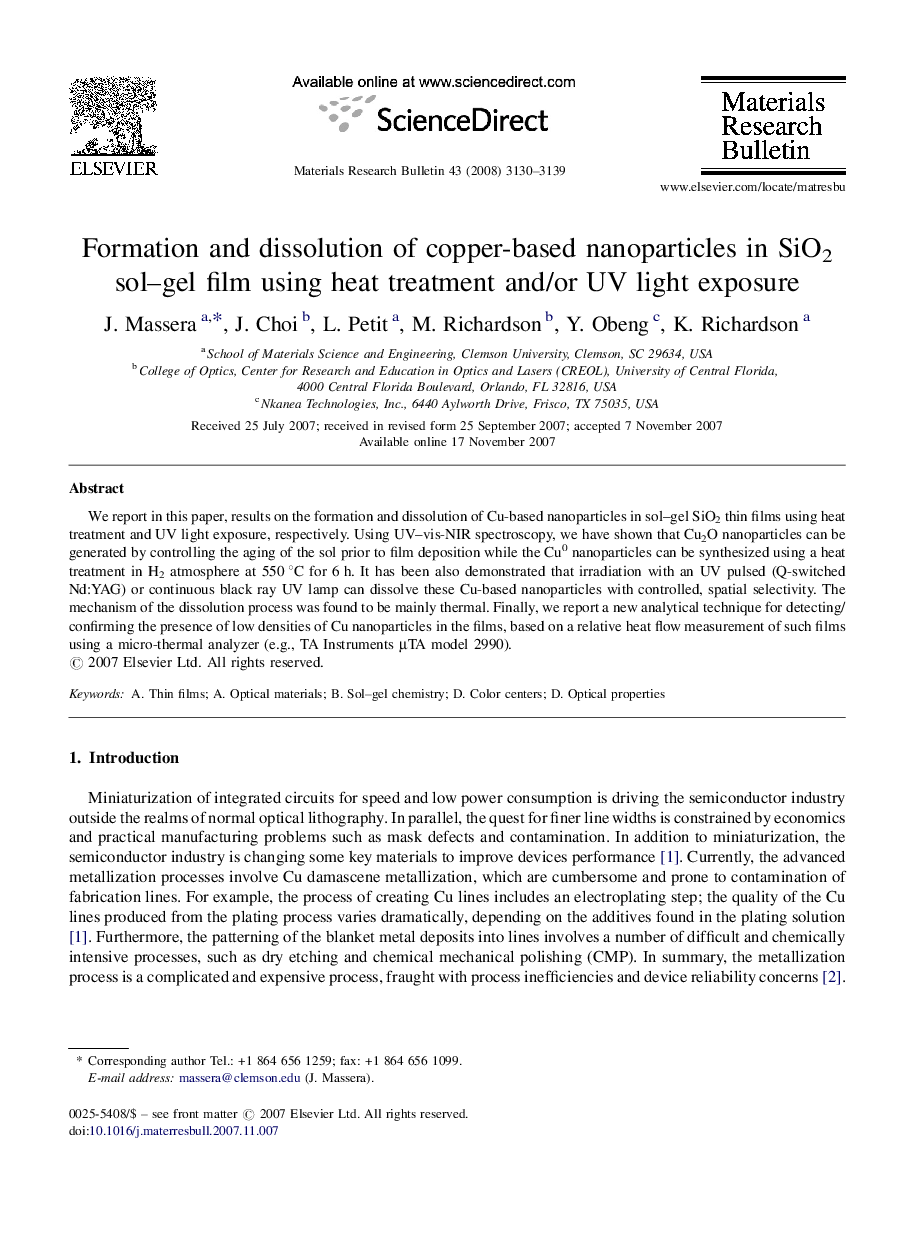| Article ID | Journal | Published Year | Pages | File Type |
|---|---|---|---|---|
| 1492107 | Materials Research Bulletin | 2008 | 10 Pages |
We report in this paper, results on the formation and dissolution of Cu-based nanoparticles in sol–gel SiO2 thin films using heat treatment and UV light exposure, respectively. Using UV–vis-NIR spectroscopy, we have shown that Cu2O nanoparticles can be generated by controlling the aging of the sol prior to film deposition while the Cu0 nanoparticles can be synthesized using a heat treatment in H2 atmosphere at 550 °C for 6 h. It has been also demonstrated that irradiation with an UV pulsed (Q-switched Nd:YAG) or continuous black ray UV lamp can dissolve these Cu-based nanoparticles with controlled, spatial selectivity. The mechanism of the dissolution process was found to be mainly thermal. Finally, we report a new analytical technique for detecting/confirming the presence of low densities of Cu nanoparticles in the films, based on a relative heat flow measurement of such films using a micro-thermal analyzer (e.g., TA Instruments μTA model 2990).
